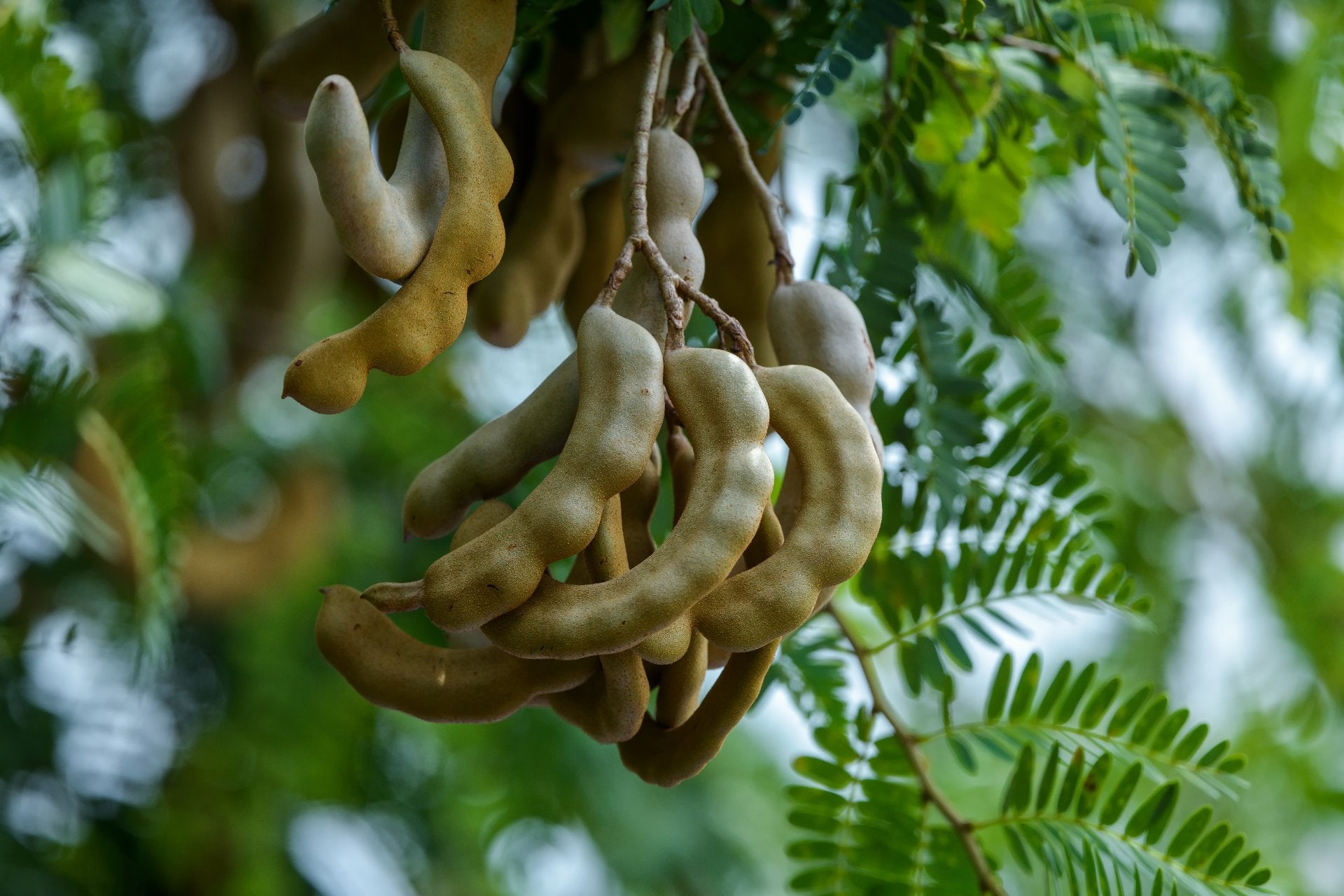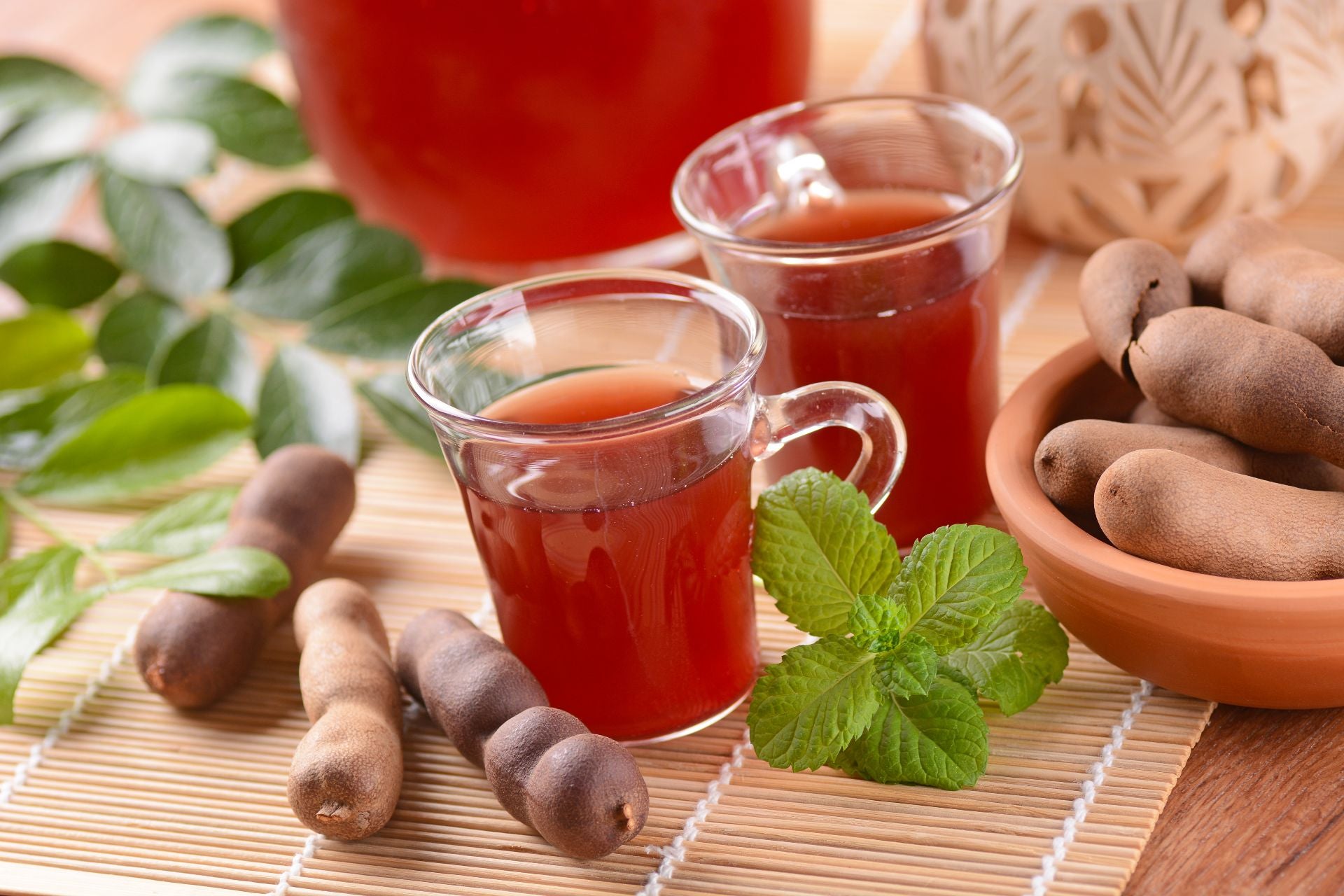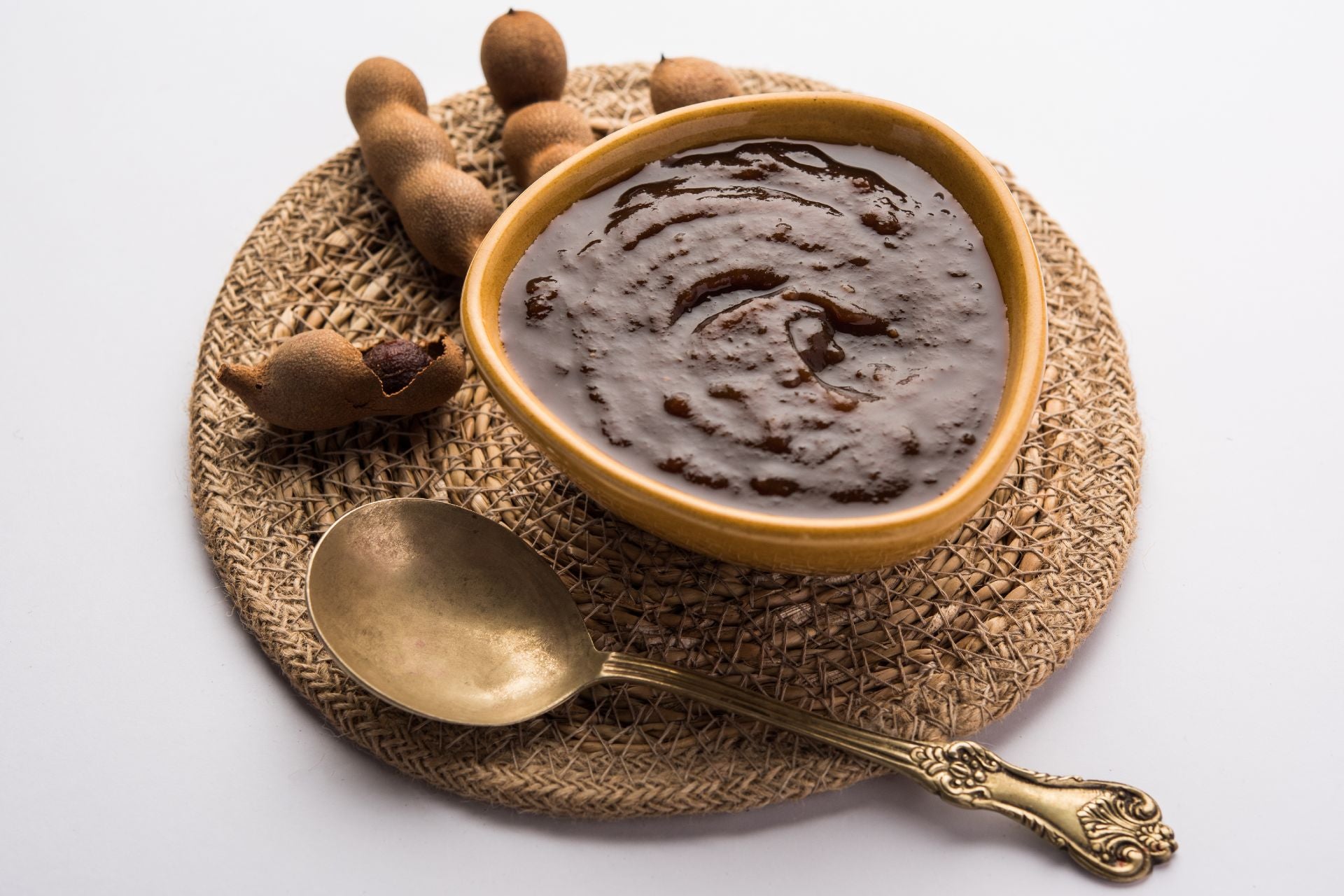Raw Pods are unprocessed, with the fruit still inside the shell. This is the freshest tamarind available.
Pressed tamarind is fruit that has been removed from the shell and condensed into a single block. If you can’t find any raw pods, this is the next best thing.
Boiled tamarind has been cooked to improve shelf life, and may also contain preservatives. This is not as fresh as the other two options, but will keep for longer. Check the label and avoid anything with too many additives.
Tamarind is actually indigenous to Africa, but has long been associated with Indian cuisine, with it’s name deriving from the Arabic tamar Hindi, meaning ‘Indian date’. It is also popular in Middle Eastern cuisine, and will likely be familiar to Ottolenghi fans. This well-travelled fruit was introduced to Mexico and Central America by Spanish and Portuguese colonists in the 16th century, where it also went on to become a staple part of the cuisine.
What does it taste like?
Tamarind has a unique, sweet-sour flavour that makes it popular in sweet and savoury dishes alike. Its flavour has been compared to tangy lemon or lime balanced by sweet caramel notes, or a cross between lemon, apricot and dates. Some varieties of tamarind are sweeter than others, and all become sweeter as they ripen.
Nutritional values
Half a cup of tamarind contains 143 calories, which is moderately high for a fruit. It is fat-free, but contains 34 grams of sugar, with 3 grams of fibre and 2 grams of protein. Tamarind is a good source of several nutrients, with the same half-cup serving providing at least 10% of your daily value for vitamins B1 and B3, as well as potassium, magnesium, phosphorus and iron.
Health benefits
Tamarind is rich in antioxidants, beneficial plant compounds that help prevent cell damage caused by particles called oxidants. Oxidative cell damage can cause premature ageing and various chronic diseases, so it’s important to protect against it by including plenty of antioxidants in your diet.












